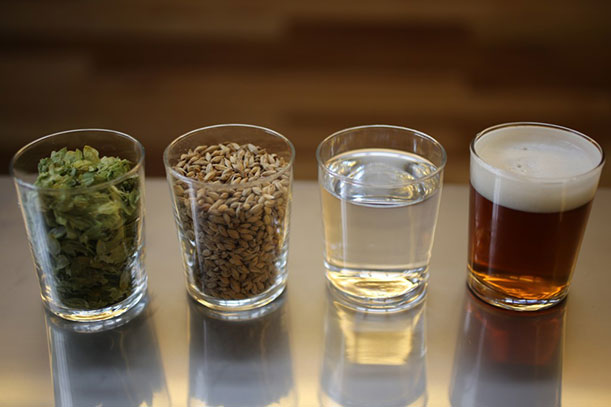For beer drinkers, a specific brand often holds a special place in one’s heart. For students, this brand is usually available at any depanneur. It is reliable, delicious, and—most importantly—cheap. For those looking to forgo the label, do-it-yourself brewing is becoming increasingly popular. Equipped with an at-home brewing kit and a bit of determination, even students can create their own personal brand of beer.
Sam Dalton, U1 Bioresource Engineering, got into home brewing because of his original interest in cooking.
“It’s actually a lot [cheaper] to do home brewing than to buy beer in stores,” Dalton said. “It’s also really rewarding to create something of your own.”
Starting the process is as easy as searching online for a home brewing store in Montreal. Stores such as Chope A Barrock on Saint-Dominique, Mosti Mondiale 2000 on Rue Jean-Talon Est, or La Cachette Du Bootlegger near Macdonald campus, can sell you all parts needed for a reusable kit for a total of $80 to $90.
Ingredients depend on the method. Some home-brewers opt for the all-grain beer method. This involves crushing and rolling barley grain (also bought from the brewing store), then steeping the barley in hot water, which converts the grain starches into fermentable sugars. Subtle differences in this technique, in addition to the amount of hops added, allows brewers to control the taste.
The simpler way to brew is to buy “super batch” from the store—a pre-hopped malt extract that brewers can then boil and put in a fermenting bucket. The super batch method, along with the purchase of yeast, costs about $30 per batch, and the all-grain method is even cheaper. While the total cost of equipment and ingredients at first may seem steep, one batch of homebrew will give you around 53 beers. Excluding the initial purchase of the kit, this comes to about 56 cents for a 375 mL beer.
“Home brewing gives you beer that is dep quality or better, for a much lower price,” Dalton emphasized.
The process is not without time and effort. After purchasing the brewing kit, and consulting sworn-by brewing website howtobrew.com, Dalton stated that sanitization, boiling, mixing, fermenting and bottling, took him about five weeks, which means a lot of waiting time and little action.
“Bottling was probably the most interesting part,” Dalton said. “I sent out a message on Facebook asking all my friends to collect their used beer bottles [then] I went from house to house picking those up.”
Bottling also involved renting a capper from the brewing store. Dalton stated that from La Cachette Du Bootlegger he was able to buy 150 caps for only $4 and rented a capper for about $5.
“It’s actually a pretty environmentally friendly way of drinking beer,” Dalton said. “Now that I’ve recycled bottles from friends, after sanitizing, I can save and use them again for all the batches I make.”
Although home brewing certainly requires an added effort, there is a great satisfaction in dictating the products you consume.
“Brewing connects you more to the food you consume and how it’s made,” Dailton said. “Making my own beer made me respect what goes into the creation of food a lot more.”









